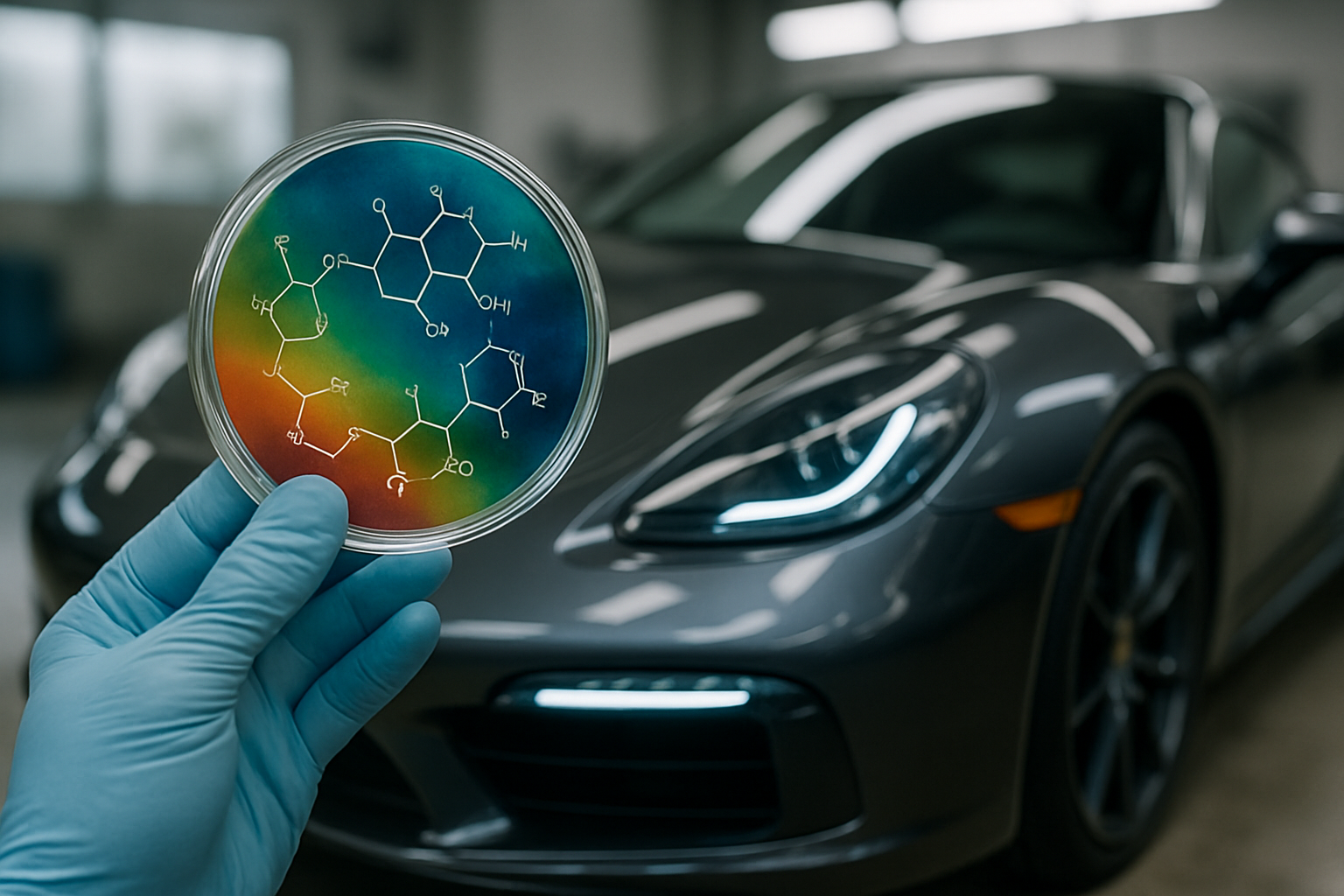The Hidden World of Automotive Paint: Beyond Color and Shine
A gleaming sports car catches your eye as it zips past, its lustrous finish seemingly alive with depth and brilliance. But have you ever wondered about the intricate science and artistry behind that mesmerizing automotive paint? Far more than just a pretty face, modern car paint is a complex ecosystem of chemistry, engineering, and cutting-edge technology. Let's dive beneath the surface and explore the fascinating world that exists in those gossamer-thin layers adorning our vehicles.

Chemistry in Action: The Base Coat Revolution
Gone are the days of simple single-stage paints. Modern automotive finishes typically employ a sophisticated base coat/clear coat system. The base coat contains pigments and special effect particles, such as metallic flakes or color-shifting elements. These particles are suspended in a carefully formulated resin, allowing for unprecedented depth and visual interest. Advances in polymer technology have led to water-based base coats, dramatically reducing volatile organic compound (VOC) emissions without sacrificing performance or aesthetics.
The Clear Coat: Guardian of Beauty and Durability
Perhaps the most critical component of modern automotive paint is the clear coat. This transparent layer acts as both protector and enhancer, sealing in the base coat while providing depth, gloss, and UV resistance. Clear coats have evolved significantly, with some incorporating ceramic nanoparticles for increased scratch resistance and self-healing properties. The latest innovations even include hydrophobic clear coats that actively repel water and contaminants, keeping your car cleaner for longer.
Beyond the Visible: Functional Coatings
The realm of automotive paint has expanded far beyond mere aesthetics. Researchers are developing coatings with remarkable functional properties. Imagine paint that can harvest solar energy to power auxiliary systems, or finishes that change color to reflect heat in summer and absorb it in winter. Some experimental coatings even incorporate piezoelectric materials, potentially turning your car’s entire surface into a giant sensor or energy-harvesting device. While many of these technologies are still in development, they hint at a future where your car’s paint does far more than just look good.
The Application: Where Art Meets Science
The actual process of applying automotive paint is a delicate dance of robotics, environmental control, and human expertise. Modern paint shops are marvels of engineering, utilizing electrostatic application techniques to ensure even coverage and minimize overspray. Climate-controlled spray booths maintain precise temperature and humidity levels, crucial for optimal paint flow and curing. Despite the high level of automation, skilled technicians remain essential, particularly for custom finishes and quality control.
Pushing Boundaries: Extreme Finishes and Custom Effects
For those seeking the extraordinary, the world of automotive paint offers limitless possibilities. Chromatic paints that shift dramatically with viewing angle, textured finishes that mimic fabric or stone, and even coatings embedded with microscopic prisms to create holographic effects – the only limit is imagination. Custom painters push the boundaries further, creating intricate airbrushed masterpieces or applying exotic materials like real gold leaf. These bespoke finishes transform cars into rolling works of art, each one unique and breathtaking.
Environmental Considerations: Greening the Paint Shop
As automotive manufacturers strive for sustainability, paint shops have become a focus of environmental innovation. Water-based paints and high-efficiency application systems have dramatically reduced solvent emissions. Some facilities have implemented paint recycling programs, capturing and reprocessing overspray. Advanced air filtration systems ensure that emissions are minimized, while energy-efficient curing processes reduce the carbon footprint of the painting process. These advancements not only benefit the environment but often result in superior finishes and reduced costs.
The Future: Smart Paints and Beyond
Looking ahead, the future of automotive paint is nothing short of revolutionary. Researchers are developing coatings that can change color on demand, either through user control or in response to environmental conditions. Self-repairing paints that can heal scratches and chips autonomously are on the horizon. Even more ambitious are concepts like interactive paint that could display information or act as a touchscreen interface. As nanotechnology and materials science continue to advance, the line between paint and smart surface may blur entirely.
In conclusion, automotive paint is a field of constant innovation, blending cutting-edge science with timeless artistry. From its crucial role in protecting our vehicles to its ability to captivate and inspire, paint remains an integral part of the automotive experience. The next time you admire a car’s finish, remember the incredible technology and craftsmanship that lies just beneath the surface. In the world of automotive paint, beauty is far more than skin deep.





